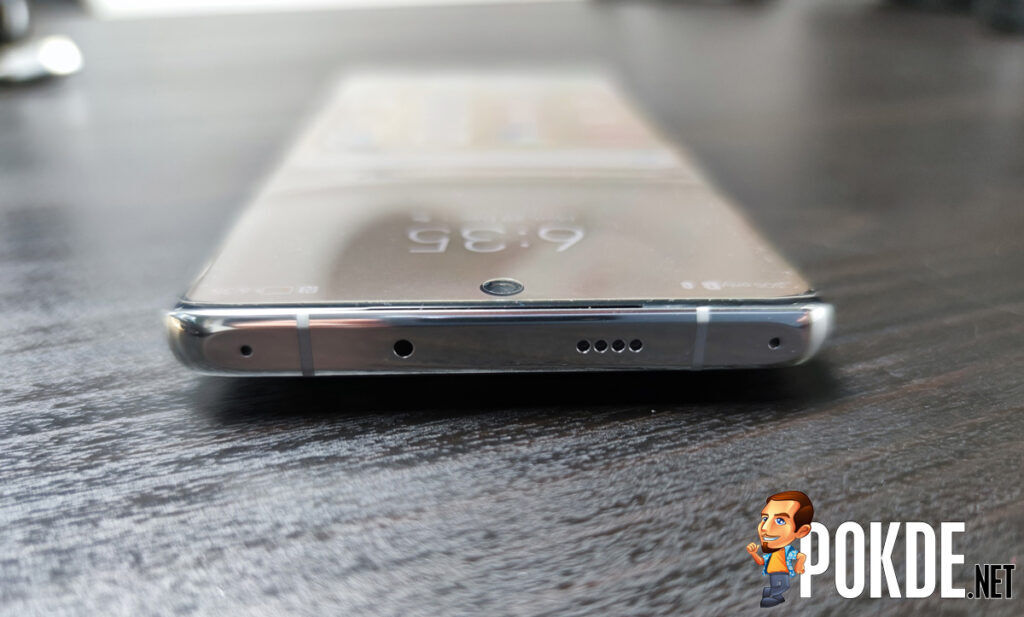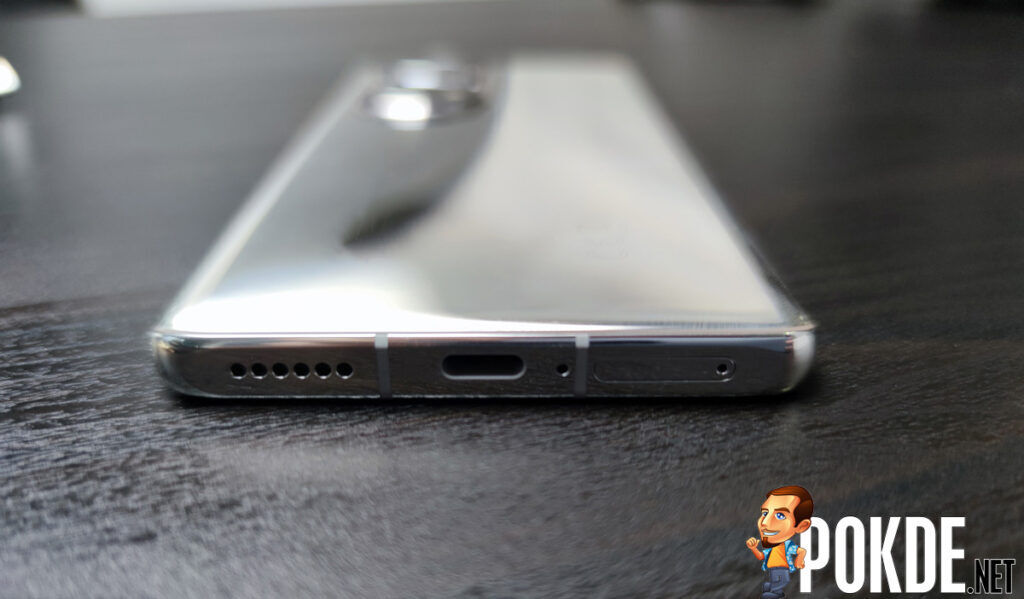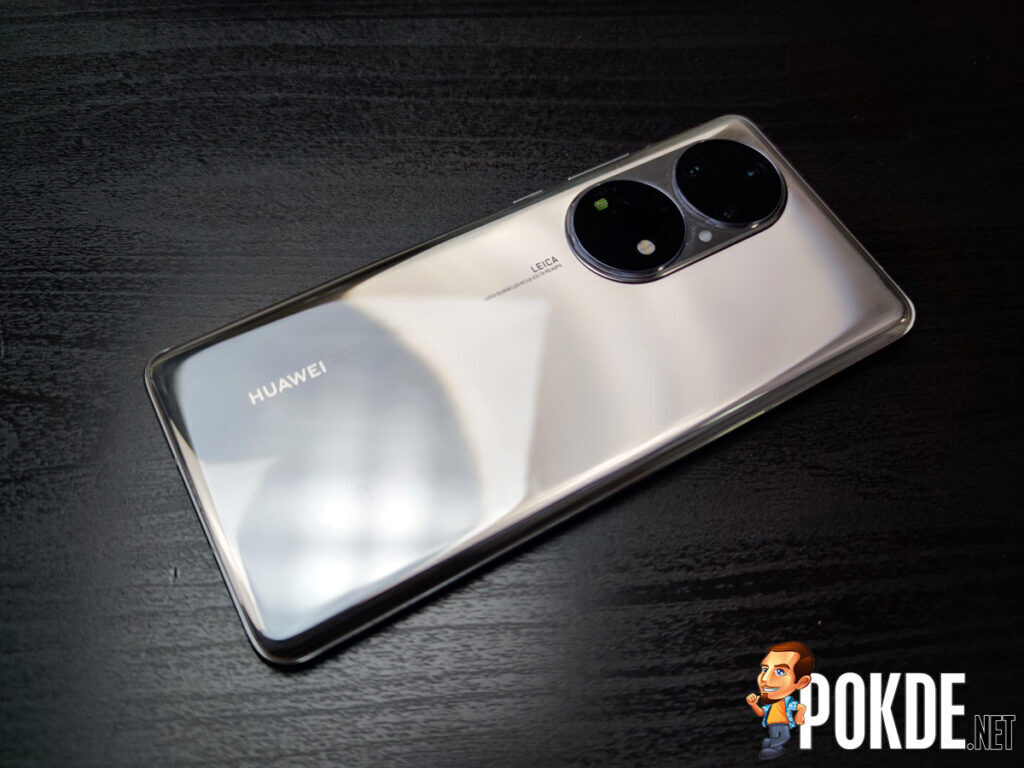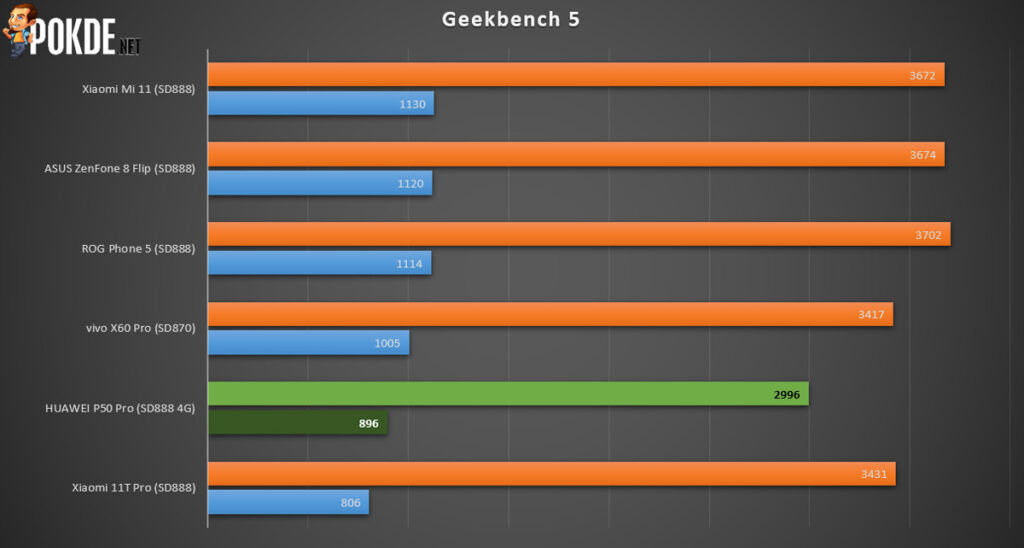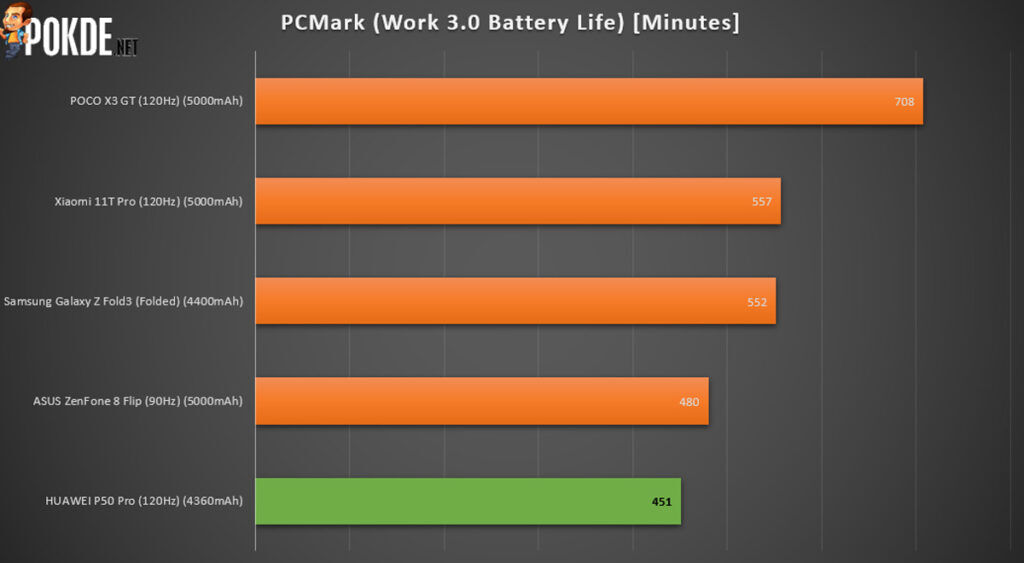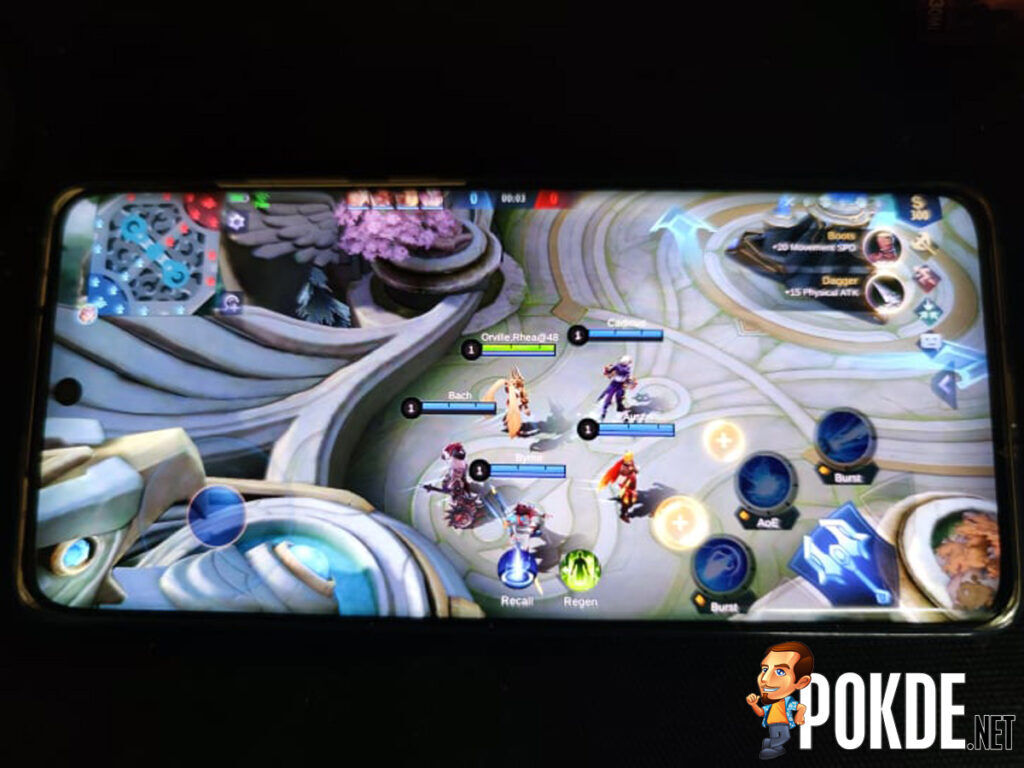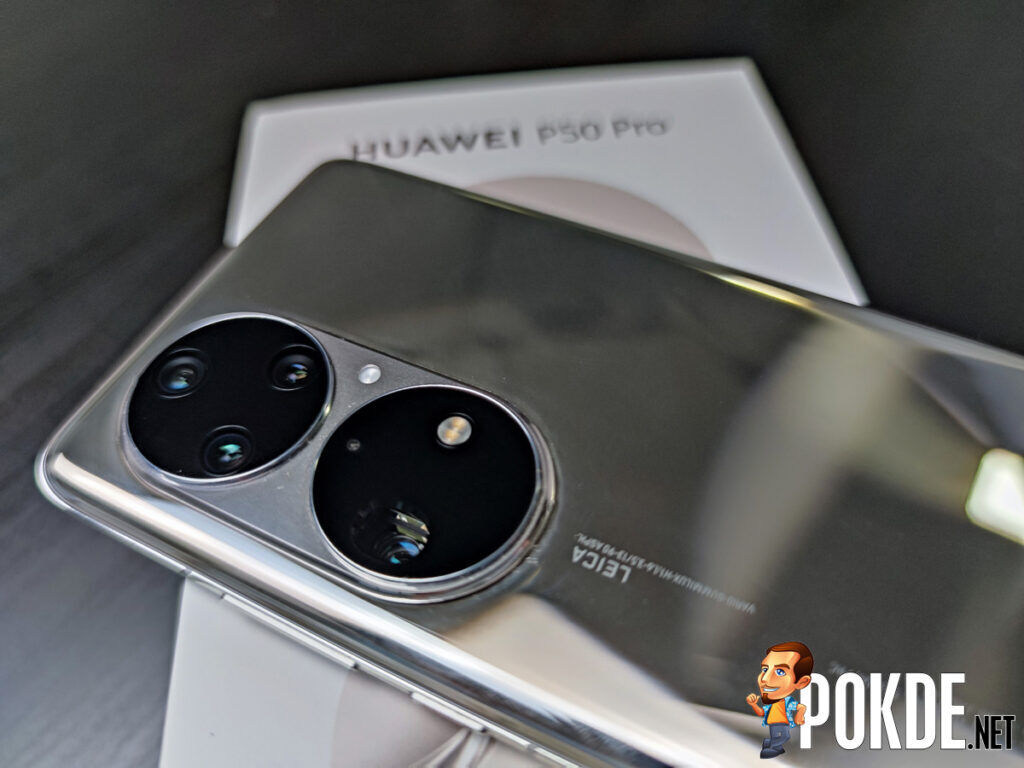HUAWEI P50 Pro Review — Photography Extraordinaire?
-
Appearance - 8.3/10
8.3/10
-
Efficiency - 7.8/10
7.8/10
-
Features - 8/10
8/10
-
Materials - 8/10
8/10
-
Performance - 8.2/10
8.2/10
-
Portability - 7.9/10
7.9/10
-
User Experience - 8.1/10
8.1/10
Overall
8/10Pros
+ Impressive camera performance
+ Dual speakers are surprisingly loud
+ Vibrant OLED display with 120Hz refresh rate
+ Unique look (design)
Cons
– Fingerprint magnet due to the glossy finish
– Ultra-wide shots can be seen resulting different colour temperature
– Bloatware
– No 5G support
We’ve recently received HUAWEI’s flagship smartphone so if you’re wondering what exactly it has to offer, find out exactly that in this HUAWEI P50 Pro review. Let’s jump straight in.
HUAWEI P50 Pro Unboxing
Straight out of the box, you can expect the following items to be included inside:
- HUAWEI P50 Pro
- Charging brick
- USB-C cable
- SIM ejector
- Soft Case
Appearance
Looking at the front, the smartphone comes with a curved 6.6-inch OLED display with 120Hz refresh rate support. As you can see, it sports a single punch-hole camera in the middle.
Over at the top, there are two microphone holes, an IR blaster, and a speaker grille.
Over on the right side of the device, you have the standard volume rockers as well as the power button. As for the opposite left side, it’s completely empty.
Moving over to the bottom, we are greeted with the secondary speaker, USB-C port, microphone and the SIM tray.
As you can see, we have the silver colour variant of the HUAWEI P50 Pro. There are two circular cut-outs fitting the quad camera setup on the top left. The finish is pretty glossy and there’s the standard HUAWEI branding at the bottom left.
HUAWEI P50 Pro Specifications
| CPU | Snapdragon 888, 5nm FinFET 1 x Cortex-X1 @ 2.84 GHz + 3 x Cortex-A78 @ 2.42 GHz + 4 x Cortex-A55 @ 1.80 GHz |
| GPU | Adreno 660 |
| Memory | 8GB |
| Storage | 256GB |
| Display | 6.6″ FHD+ (2700 x 1228) OLED display, 120Hz refresh rate |
| Audio | Dual speakers |
| Camera | 50MP f/1.8 main camera PDAF, Laser AF, OIS 64MP f/3.5 periscope telephoto, PDAF, OIS, 3.5x optical zoom 13MP f/2.2 ultra-wide camera 40MP f/1.6 B/W Leica optics, AI Camera, Auto HDR, Pro Mode, Portrait, Beauty |
| Selfie camera | 13MP f/2.4 selfie camera |
| Connectivity | WiFi 802.11 a/b/g/n/ac/ax, WiFi 6 Bluetooth 5.2 USB Type-C 3.1 |
| Software | EMUI 12 |
| Battery | 4360mAh 66W fast charging 50W wireless charging (charger not included) |
| Dimensions | 158.8 x 72.8 x 8.5 mm |
| Weight | 195g |
| Ingress protection | IP68 |
Performance
Before we begin the usual benchmarks, it’s worth pointing out that 3DMark was unable to be installed on the device for some odd reason. Should we manage to get it up and running, we will update the review accordingly. With that aside, let’s start with the synthetic tests.
First up is Antutu V9, where you can see that the performance from the 4G variant of the Snapdragon 888 is quite visible compared to its 5G brother for flagship devices that we’ve reviewed this year.
Geekbench tests out overall CPU performance and we can see that the Kryo 680 in the Snapdragon 888 (for the device, of course) is a bit lacking in both single and multi-core tests. It falls slightly short of the vivo X60 Pro, which uses an older Snapdragon 870.
Moving over to the latest PCMark Work 3.0 test, though the device is near the bottom half of the list, it’s not a bad score. It falls a bit short compared to the ROG Phone 5 and Zenfone 8 Flip, which scored the closest.
While it might seem bad that it’s at the bottom of the list, I personally believe that the battery performance is ‘OK’. You have to take into account that the device packs a smaller battery capacity and sports a high 120Hz refresh rate for the test.
As for real-life usage, I find that the phone can last me up to 1 and a half day before I find the need to charge it. Personally I feel that the device was helped by the AI battery management, allowing it to last longer which is a good thing. If you are wondering how fast the 66W fast charger is, I started the session at 1% and it rose to 55% in a 30-minute period. It also supports 50W wireless charging but unfortunately, it didn’t come with the box so we couldn’t test it out.
User Experience
 On the hands, the smartphone just screams premium with a clean look. It may annoy some however as you can easily get fingerprint smudges on the back. Of course, you could negate this by putting on a cover to solve that issue, should you choose to.
On the hands, the smartphone just screams premium with a clean look. It may annoy some however as you can easily get fingerprint smudges on the back. Of course, you could negate this by putting on a cover to solve that issue, should you choose to.
When it comes to media consumption, I can definitely say that it was an enjoyable experience thanks to the beautiful OLED display, which made the colours pop. Additionally, the dual speakers made it better as they are surprisingly louder than I expected.
As you might have noticed from a couple of our reviews of Snapdragon 888-powered devices, they tend to heat up quite badly. That doesn’t seem to be the case here with the HUAWEI P50 Pro. Even after playing Mobile Legends for half an hour, the smartphone simply warms up but not to a level that’s alarming.
The overall UI experience is quite smooth and snappy. There are no issues of any sluggishness, and seeing what the smartphone packs in terms of hardware, I’m not surprised. If there’s a thing that I’d complain here is the bloatware. There’s just too much going on in the folders, and there’s a lot. I’d rather have a much cleaner menu.
 There’s nothing much new when it comes to the camera UI for the device. It’s straightforward and simple to use. If it’s not to your liking, don’t worry. You can choose to customize it to your very own preference.
There’s nothing much new when it comes to the camera UI for the device. It’s straightforward and simple to use. If it’s not to your liking, don’t worry. You can choose to customize it to your very own preference.
I must say that I was really impressed with the camera capabilities of the smartphone, where in good lighting, it produces really vibrant photos. The smartphone comes with the company’s XD optics, which is basically a photography algorithm, and by the looks of it, it excels very well. Even in low-light, it doesn’t seem to have any issues in capturing detail.
The dynamic range is impressive as well. If there’s one thing that I’d complain about this section is that you can totally notice a difference in colour when you change from the main camera to the ultra-wide lens. Keep this in mind as the shots you take might not be consistent as you switch between the cameras.
If you ask me, I personally enjoyed taking close-up shots with the HUAWEI P50 Pro. I mean, just look at those sushi and water droplets. I definitely had fun with that.
You can check out the full-sized images by heading to the link right here.
HUAWEI P50 Pro Verdict
We finally reach the point where we give our verdict. If you want a great camera, then yes, the P50 Pro is probably one of the best out there. But at RM4199, with the rather questionable performance of the SD888 4G and lack of 5G when 5G is actually taking off in Malaysia, does make it a rather difficult recommendation to make.
We’re currently in the midst of reviewing the HUAWEI P50 Pocket as well. So be sure to stay tuned to Pokde.net and learn of our thoughts on that device too.
Our thanks to HUAWEI Malaysia for providing the HUAWEI P50 Pro that was used in this review.









